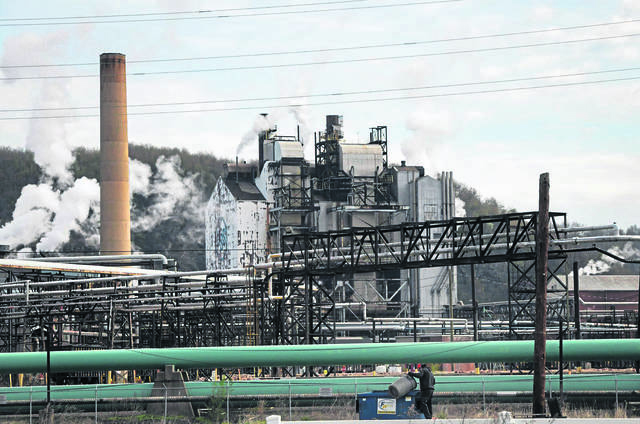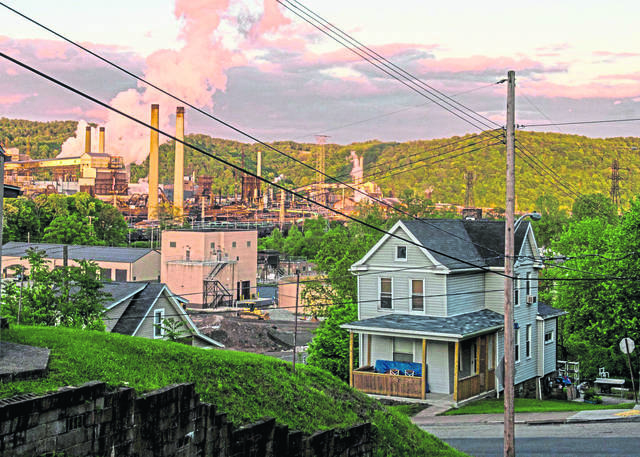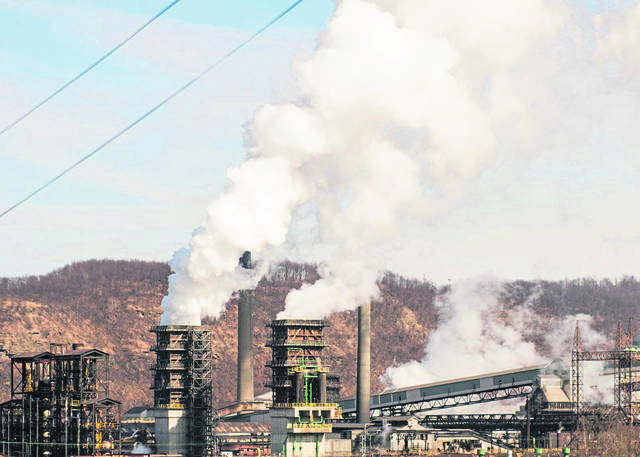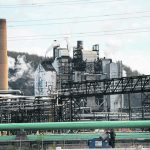During the 100 days that a pollution control system at Clairton Coke Works was offline following a 2018 fire, people living near the facility experienced worsened asthma symptoms, a study shows.
Researchers at the University of Pittsburgh will publish their findings in an upcoming issue of the Journal of Allergy and Clinical Immunology.
They studied 83 people listed in their Asthma Institute registry following the fire on Dec. 24, 2018.
The gas-fueled fire burned for about two hours, and tore through the plant’s No. 2 Control Room, damaging critical equipment used to clean coke oven gas, and shutting down pollution-control systems.
About 2½ weeks later, the Allegheny County Health Department began to warn residents about high levels of sulfur dioxide, which the study’s authors said is known to exacerbate asthma and worsen lung function, including lower lung function in children.
Over 102 days, the study found, “an unprecedented amount” of sulfur dioxide was released into the environment before repairs were completed.
The release, the authors said, was 25 times what it would normally be for six weeks.
According to the study, in the immediate aftermath of the fire, the sulfur dioxide emissions from the Clairton Coke Works averaged between 40 and 50 tons per day.
In March and April, daily emissions exceeded 50 tons — 25 times higher than was typical.
Immediately after repairs were made to the pollution control room, the levels decreased to less than 5% of what had been reported immediately after the fire, the study said.
The participants were identified through Pitt’s Asthma Institute registry, which was established in 2007 and includes approximately 2,200 patients.
Of those used in the study, 39 lived within 10 miles of the coke works — the largest in the United States — while 44 lived beyond that distance.
They were contacted by researchers and questioned in early February 2019, and then again, two months later.
According to the study, those who lived closest to the plant had an 80% increased risk of worsened asthma than those who lived furthest away.
Once the pollution control system was repaired, the study found that those numbers normalized.
The study also found that participants living closer to the coke works detected a rotten-egg smell and were more aware of the event than those who lived further away.
Despite news reports and alerts issued by the Allegheny County Health Department, 44% of the study’s participants were not aware of the dangerous environmental conditions.
“Our study reveals that there is a need for a more robust notification system that uses many modes of communication so people can make informed, timely decisions to protect their health,” said senior author James Fabisiak, director of the Center of Health Environments and Communities at Pitt Public Health.
Angelo Taranto, who is the secretary/treasurer for Allegheny County Clean Air Now, agrees that a better alert system is necessary to protect the communities around industrial facilities like the Clairton Coke Works.
His group has been advocating for improvements to reduce industrial pollution on Neville Island, and Taranto believes the Pitt study showing a causal link between the coke works’ pollution and respiratory illness will assist in that effort.
“It brings more attention to it,” he said. “It should be obvious, but we often get pushback from industry and even from regulators.
“Anything that provides proof that there is a connection really supports our efforts.”
U.S. Steel spokeswoman Amanda Malkowski said that the company has announced enhanced commitments to sustainability and supports the health department’s inversion rule, which includes air quality alerts in the Mon Valley.
“We have spent more than $300 million on environmental improvements in the Mon Valley since the Clairton fire, which reflects just part of our commitment to the environment and our neighbors,” she said. “These investments and the dedication of our employees have led to record-setting environmental performance for both U. S. Steel and Allegheny County.”
Since 2018, Malkowski said, U.S. Steel has improved its transparency and increased its frequency of communication with local officials, agencies and community advisory panels.
“Safety and environmental performance remain our top priorities, and we value our commitments to our employees, communities and the environment,” she said.
The fire at the coke works has also led to two separate lawsuits — one in federal court over Clean Air Act violations, and another in state court, which is a private, nuisance complaint alleging that U.S. Steel’s negligence harmed the people living in the communities around the plant.













